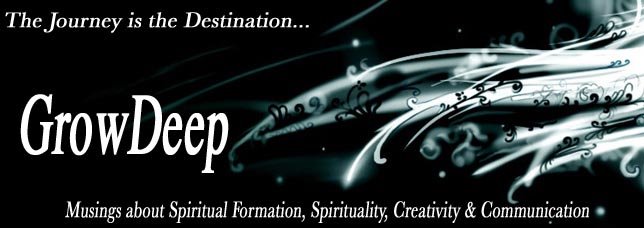 Every summer
Every summer, our church puts on a import car show for the region. At this event, over a thousand people will come out to check out the cars and listen to the
battle of the bands competitors. It’s amazing the lengths a person will go to
pimp-out their
ride! Cadillac SUV’s with over twenty television screens placed everywhere, including the brake lights. Wheels so bright, shiny and clean my one-year-old could eat off of them. The paint, the sound, the interior, nothing is left untouched by these ardent
importers. However, there is one dimension that sets the diehard from those merely trying to get a glance of admiration as they drive down the strip, and that’s what’s under the hood. What does their engine look like, is it equally
tricked-out, and perhaps most importantly, CLEAN? You know the person is serious about their car, when you could eat not only off their wheels, but their radiator, when there’s no grease to be found, anywhere. If you hope to win big in the import car showing business, what’s under the hood matters!
Mark is an under-the-hood kind of guy. As we’ve seen thus far, Mark goes to great lengths to demonstrate Jesus first and foremost as the Servant, however it is imperative that we note that he goes to almost equal lengths to show the demeanor by which He did so. In other words, what’s under the hood of this
Load-Bearing-
Work-Ox? Service ceases to be service if it is self-seeking or ill motivated. The service of many is disqualified by their very motivation, attitude and expressions.
In the Gospel of Mark we are given many details, as to the demeanor, and postures, and looks, not found in any other Gospel. In the incident where the little children were brought to Him that He would touch them, in Mark alone do we read, that “He took them up in His arms, laid His hands on them, and blessed them” (10:16). So it was with the little child, who became an object lesson for the disciples, “Then He took a little child and set him in the midst of them. And when He had taken him in His arms, He said to them” (9:36). Likewise, it is here that we are given the distinction of how He healed Peter’s wife’s mother when it says, He “took her by the hand and lifted her up. And she served them” (1:31). Once again, here only do we read, “He took the blind man by the hand and led him out of the town” (8:23). Finally, it is in Mark’s account alone that we read, of the little boy with the spirit of deafness, where it says, Jesus took him by the hand and lifted him up, and he arose” (9:27).
There is another observation found in Mark’s Gospel, whereas the other Gospels, describing the exact same scene overlook this minute, yet significant insight into the heart of the Servant Jesus. This acute analysis revolves around the fact that Jesus took time
to look. At first glance this may seem trivial, but not to Mark, not in the least. On one particular occasion, it was the Sabbath and Jesus entered the Synagogue. There happened to be a man there with a “withered hand.” All eyes were on Jesus, especially those of the religious leaders. They eyed him to see whether he would heal the man or not. Thus, we read, “when He had
looked around at them with anger, being grieved by the hardness of their hearts, He said to the man, ‘Stretch out your hand.’” (3:5). I can’t help but wonder, what must that
look have been like? I imagine everything seemed to come to a crashing halt, frozen in time, suspended in space, silence filled the room, while Jesus engaged in the slow panoramic scanning of the eyes around the room, until He had locked eyes with each one, and locked eyes indeed long enough to peer deep into their hearts, allowing them to experience the piercing fury and fire of the Father. But then His eyes fell upon the man with the withered hand, and everything changed. The fury turned to compassion and the fire now released a love not known to humanity. An image no one would soon forget. For Mark, this is anything but an empty arbitrary insertion, it’s a snapshot, a photo, one that he wants to become etched deep into the heart and mind of his reader. Here alone do we see, And He looked around in a circle at those who sat about Him, and said, "Here are My mother and My brothers!” (3:34). Then there’s the look never to be forgotten, which happened when He spoke of His cross, and Peter began to rebuke Him. Here alone do we read, “when He had turned around and looked at His disciples, He rebuked Peter, saying, "Get behind Me, Satan! For you are not mindful of the things of God, but the things of men" (8:33).
What about the
Rich Young Ruler? We often get this image that Jesus scoffs at him as if he were some spoiled brat, unable to detach himself from his stuff. Though this may very well have been true to some extent, Mark inserts something that sheds light on the inner workings of Jesus regarding this young man. For starters, Mark doesn’t portray the posture of this young man as some lazy slouch, sauntering around the streets of Jerusalem, sucking down the proceeds from his sugar-daddy’s inheritance. Mark alone sets the stage by saying, as Jesus “was going out on the road, one
came running,
knelt before Him, and asked Him, ‘Good Teacher, what shall I do that I may inherit eternal life?’” This boy is a “Gette’r Done!” boy. He chases down the pack, pushes through the distractions of yuppie-hood, and kneels in humility before Jesus. There’s the question from Jesus and then the impressive answer from the young man. Then he gives us a snap-shot of Jesus and His demeanor towards the one kneeling before Him. Here alone do we read, “Jesus, looking at him, loved him.” Then again, “he (the young man) was sad at this word, and went away sorrowful.” And finally, this particular scene shifts as “Jesus looked around and said to His disciples, ‘How hard it is for those who have riches to enter the kingdom of God!” (10:17-23). The Gospel of Mark is loaded with the distinctive description of Jesus
looking. Jesus understood that a single
look often has the capacity to communicate on a level much deeper and fuller than mere words.
Portraits of Jesus Experts tell us that communication is composed of different methods: words, voice, tone and non-verbal clues. Of these, some are more effective in delivering a message than others. According to research, in a conversation or verbal exchange:
Words are
7% effective
Tone of voice is
38% effective
Non-verbal clues are
55% effective.There is a powerful message in the message behind the message, the message felt, the message seen, the message that often echoes far beyond the words spoken. To our detriment, we often only focus on the technicalities of the actual
words that we spoke, without understanding the parameters of the other components of communication, that is, the other 93% of communication.
Reflect on the components of communication referenced above in light of the Gospel of Mark. As Mark walks us through the life and actions of Jesus, what’s the
message-behind-the-message?
In your life, is the
message-behind-the-message consistent with what you’ve said?
Begin attending to your
message-behind-the-message (the tone of your voice and the non-verbals being released, which as we have seen, often weigh much more than the mere words we speak. To assist you in the process, the internal question has to move beyond,
what I said (in regards to words), to
what did they hear me say (which always encompasses the full message transmitted: words, tone, non-verbal, not to mention the
spirit behind what’s being said).






















